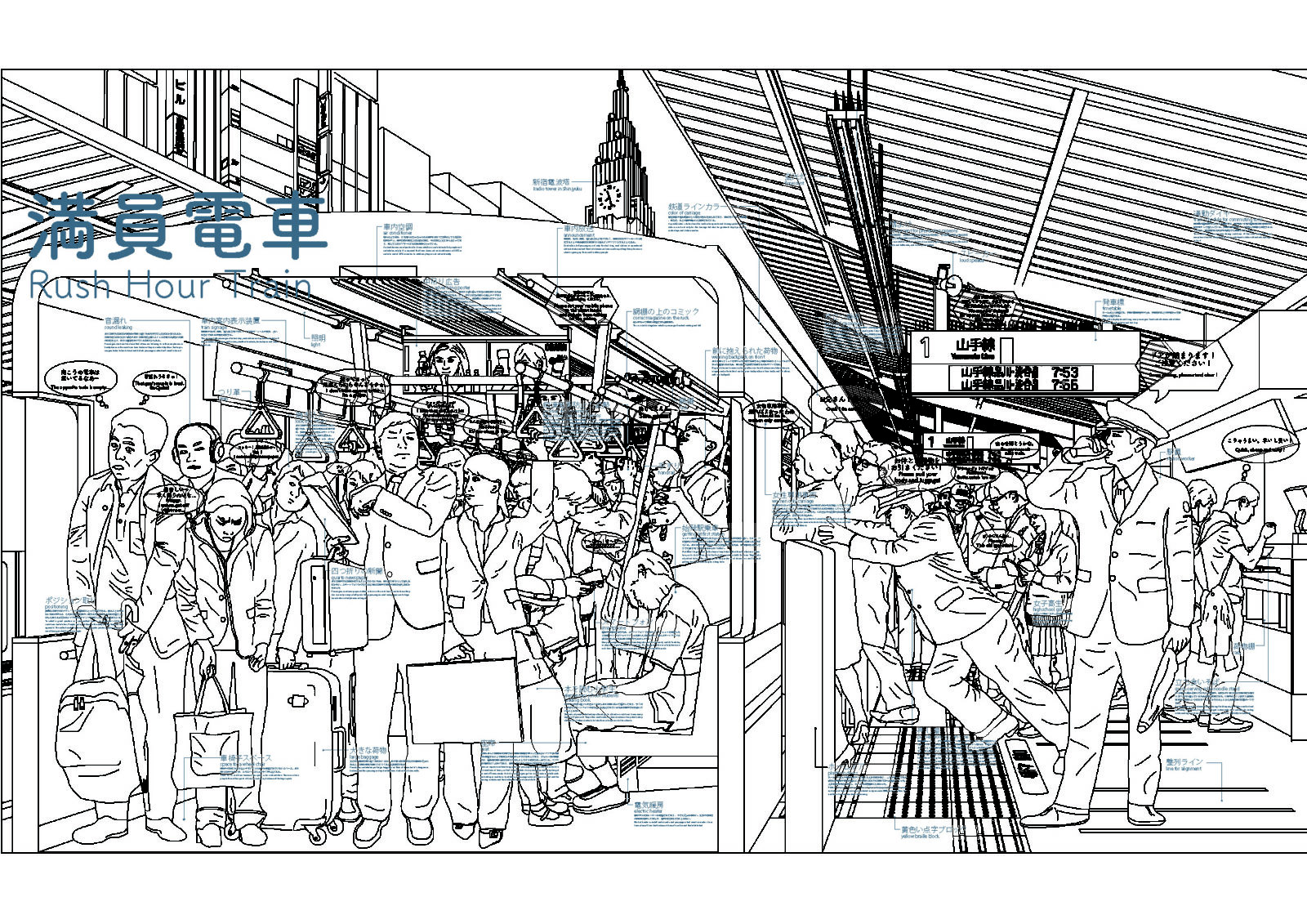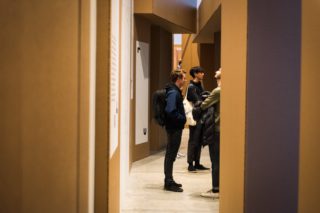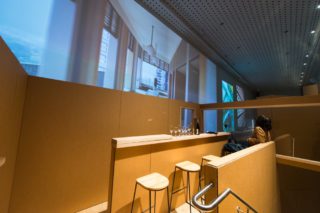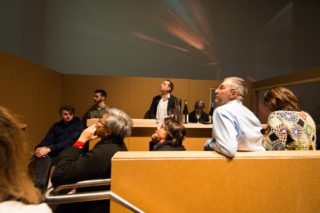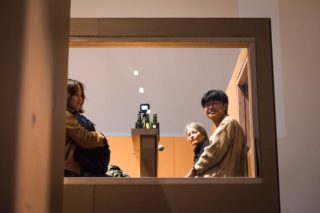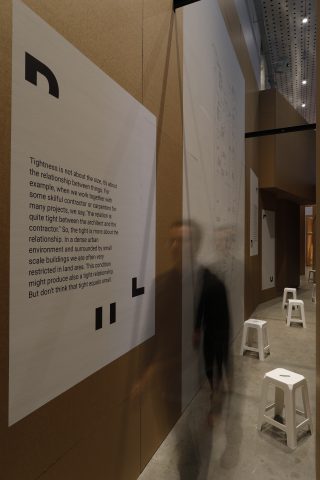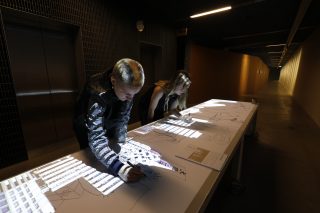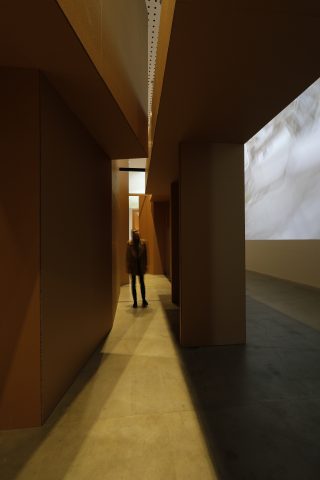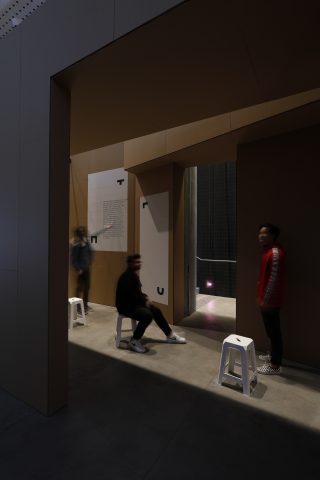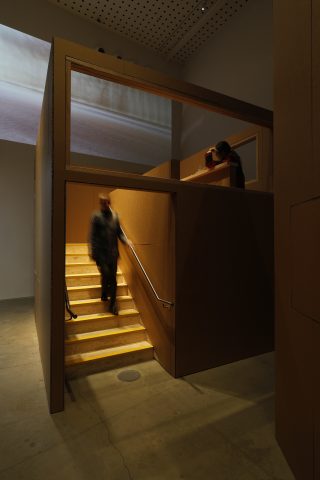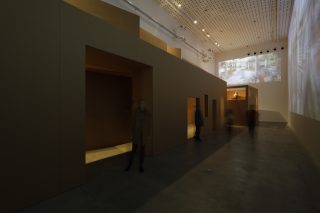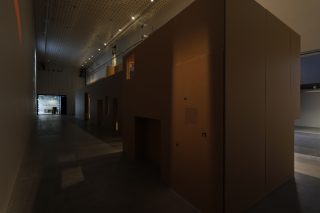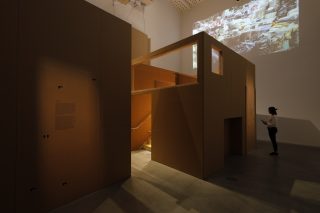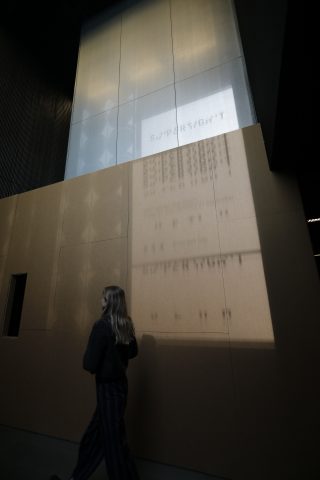Super Tight
25.07.2019 – 20.09.2019
Super Tight explored the culture of spatial tightness emerging in Asian cities and its creative potential. This immersive exhibition considered techniques for living closely, unpacking the delight and difficulty that arises from the dense occupation of large cities.
More than half the world lives in cities, more than half the world lives in Asia, more than half of the world's megacities are in Asia. Asian cities are therefore key in examining new ways of being densely urbanised. The by-product of unprecedented metropolitan convergence is the emergence of new urbanisms and new architectures, new models for living and making culture.
“Super tight” describes the small, intense, robust and hyper-condensed spaces that emerge as a by-product of extreme levels of urban density. Tightness is both a consequence of density (but is not density itself) and a series of social, economic and cultural practices that have developed in response to the rapid growth and consolidation of cities.
In Super Tight we asked: are big cities inherently tight, or is tightness something that transcends density and can emerge without vast populations? Is tightness desirable and how is the concept relevant to thinking about future Australian cities? While urban density has been heavily explored, Super Tight looked specifically at the culture of tightness that has emerged in Asian cities over the past 30 years, and the role that designers have played in the material and social behaviours of tightness.
The exhibition examined the emergence of dense urban environments with an eye on the social, political, economic and regulatory issues that have led to the generation of present-day cities in Asia. It speculated on what causes density, how dense cities become tight, and how cultural tightness emerged.
Super Tight looked at what it means to live and work closely, through not only formal or spatial qualities, but through the sounds and feel of closeness. The exhibition questioned social attitudes to tightness, both in Australia and abroad. More broadly it proposed the concept of the “super tight” as an approach to design and culture that is valuable.
Curators and exhibition design: Graham Crist, John Doyle, Yoshiharu Tsukamoto (Atelier Bow-Wow), with a new major installation by Taishin Shiozaki (Shiozaki Laboratory).
Graphic design: Pandarosa
SUPER TIGHT CONTRIBUTORS
Super Tight cinema: Studio Wasabi (Rafael Balboa with Yasemin Sahiner, Architects, Tokyo); Sanuki Daisuke Architects (Sanuki Daisuke, Architect & Hiroyuki Oki, Photographer, Ho Chi Minh City); Desiree Grunewald (Illustrator, Ho Chi Minh City); Sue Hajdu (Photographer & Writer, Ho Chi Minh City); Drawing Architecture Studio (Li Han & Hu Yan, Beijing); Tohru Horiguchi (Architect & Academic, Osaka); Mass Studies (Minsuk Cho, Architect, Seoul); New Office Works (Paul Tse & Evelyn Ting, Architects,Hong Kong) Archie Pizzini (Architect & Photographer, Ho Chi Minh City), Andrew Stiff (Film-maker, Ho Chi Minh City); Tomito Architecture (Tomito Ito & Miho Tominaga, Yokahama); WOHA (Wong Mun Summ & Richard Hassell, Architects, Singapore); Thierry Bernard-Gotteland (Sound Recording Artist, Ho Chi Minh City); Superimpose (Ruben Bergambagt, Ben de Lange, Carolyn Leung, Architects, Beijing, Hong Kong, Shanghai).
Overlapping City: Taishin Shiozaki (Shiozaki Laboratory & Tokyo Tech), Chika Kato, Tatsuya Ide, Hyuga Obana, Li Qiaozhi, Yu Ziliang
Studio contributors: Tenshan Volodymyr Dereznichenki, Taiki Hayata, Sho Tanaka, Kano Maeda, Megumi Nagashima, Shika Nakazawa, Jun Sato, Kaori Shiota, Hirotaka Sugisaki, Yoshimasa Sugihara, Che Jin, Yushiro Hirose
Shiozaki Laboratory would also like to thank: Masaomi Takahashi & Shimizu-yu (public bath), Kenji Kawahara & Kenko Mahjong Group (NPO), Shiori Kawamoto, Tomoji Kawamura & GungHo Online Entertainment, Inc., Taebeom Kim & Tamao Hashimoto, Hirohumi Matsumoto & Tomoko Oosuki, Ken Ohyama, Yasuhiko Ookawa & Rental Case and Game Ikiikan, Pha, Keiko Shiotani & Tange Associates, Michiko Shiba & Kawasumi, Kobayashi Kenji Photograph Office, Ken Takahashi & Gogo Tsushin, Suguru Tanaka & FASHIONSNAP.COM, Terada & Katsuura City Tourism Business Section, Tomohiko Yamada & Studio Battery, Nobuyuki Yumoto & Musashino Residents' association, Mikoshi Festival Oreservation Society, Usui & niconico, Nishio & Share house, Niantic, Inc., Yuki Nakagawa & Chintai Corporation, Kentaro Nakatsuji & CoMix Wave Films Inc., Saki Okamoto & Chiba Prefectural Tourism and Local Products Association, Engadget, Tatsuyuki Maeda
RMIT Design Hub Gallery Team: Kate Rhodes, Nella Themelios, Erik North, Tim McLeod, Michaela Bear, Síofra Lyons, Ari Sharp, Simon Maisch, Robert Jordan, Gavin Bell, Jessica Wood, Mason Cox, Ian Bunyi, Luke Pringipas
This exhibition is part of Open House Melbourne 2019.
Cover image: Tokyo Rush Hour, courtesy of Shiozaki Laboratory, Tokyo.
Images:
Installation images taken during Open House Melbourne 2019 weekend, courtesy of Vicki Jones.
Installation images by Tobias Titz.


